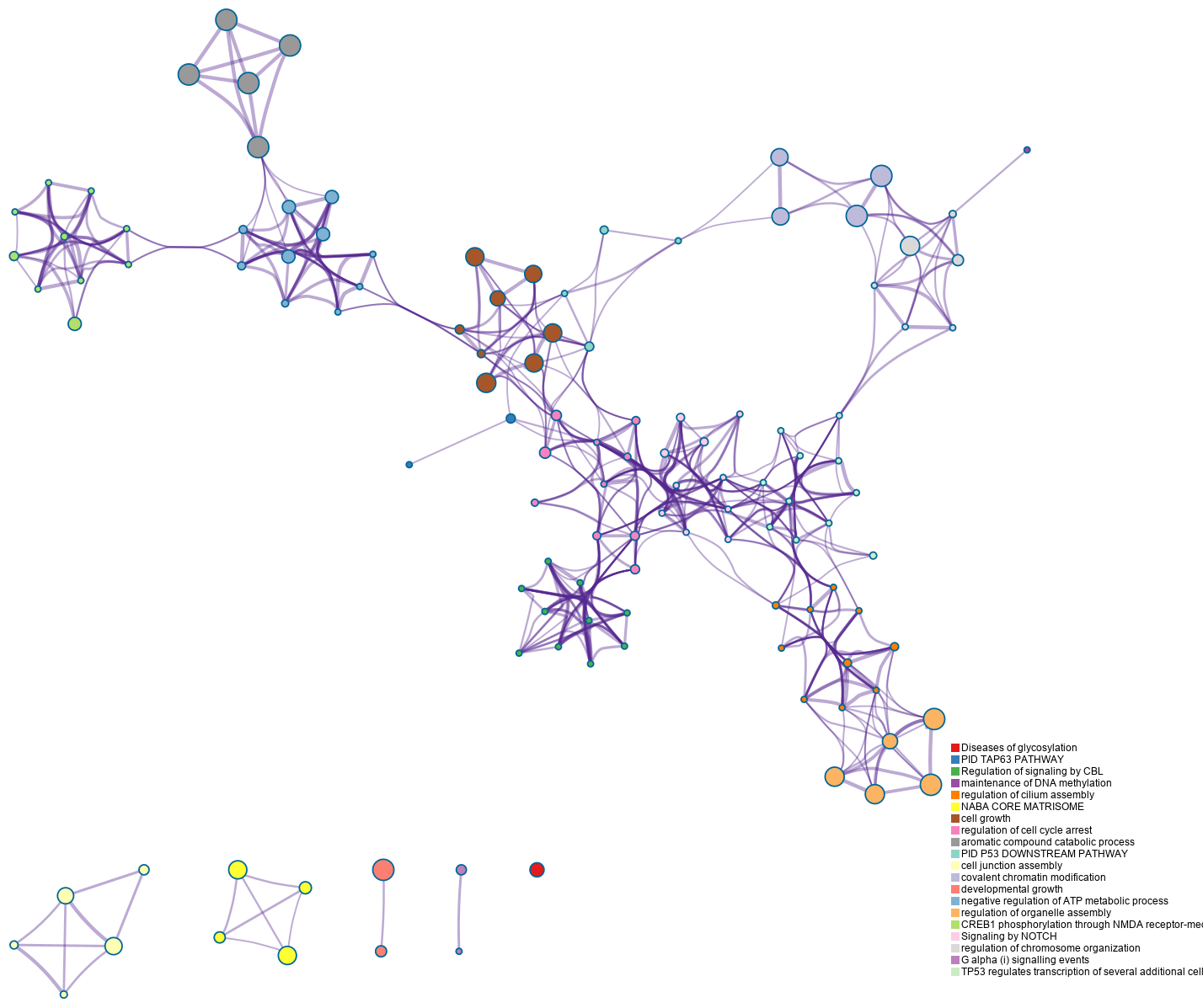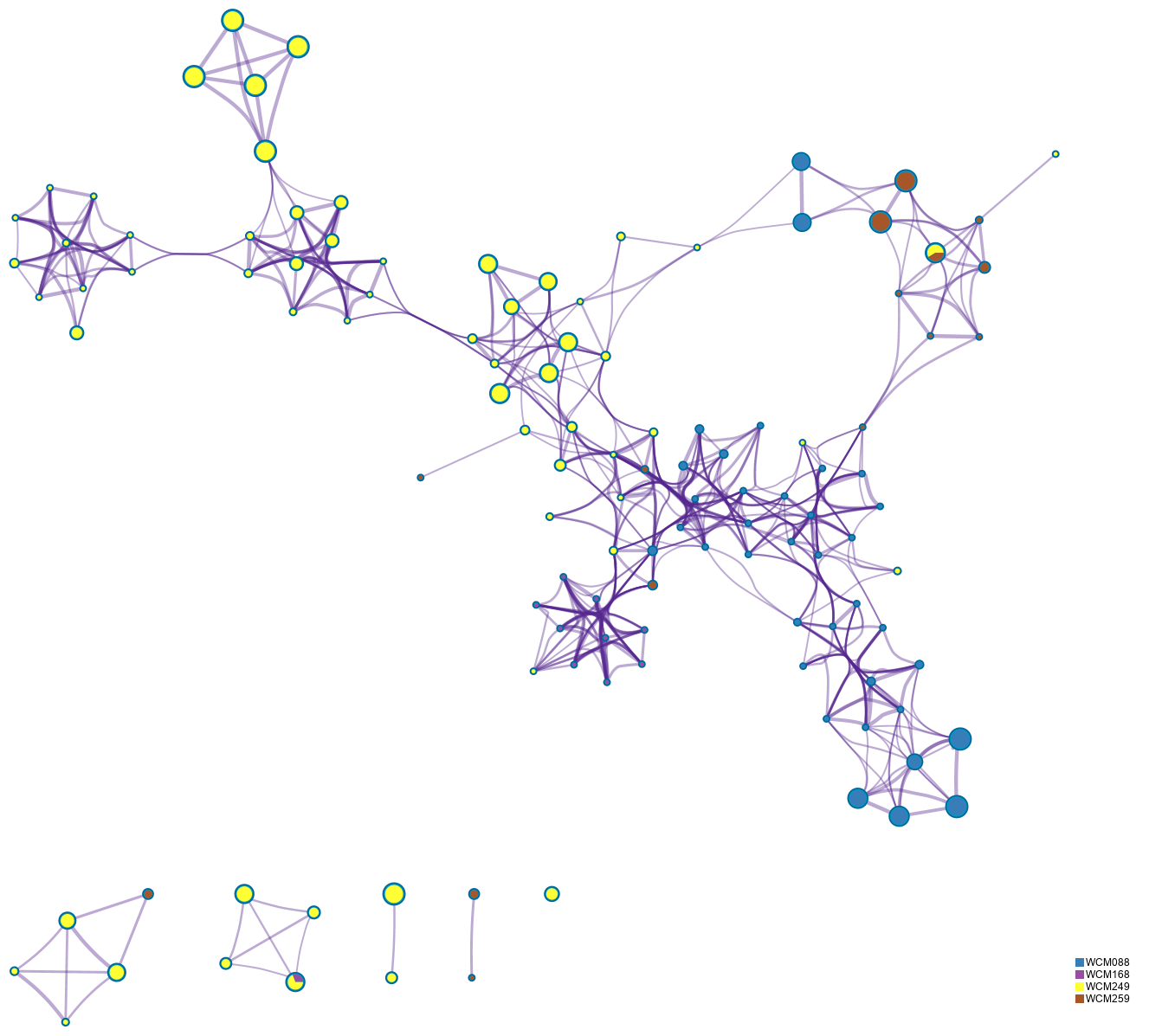| Patient ID: | p031_WCM117 |
| Age: | 61 |
| Gender: | M |
| Cancer Description: | - |
| Sample Location: | 5 primary tumor regions and 7 metastasis |
| Tumor Stage: | IV |
| TNM Stage: | - |
| Treatment: | This study compares samples from pre- and post-chemotherapy |
| Tumor Purity: | sample1:0.68; sample2:0.18; sample6:0.36; sample7:0.86; sample8:0.87; sample9:0.84; sample10:0.54; sample11:0.64; sample12:0.72; Software: CLONET |
| Sample Sequencing: | Whole exome sequencing |
| PMID: | 27749842 |
| Data Sources: | Figure3,Figure4,TableFig 4d,Supplementary Table 10 |
| Journal: | Nat Genet |
| Published: | 2016 Dec |
| Sequencing Platform: | Illumina HiSeq 2500 |
| Pipeline/Software: | QC:FASTQC; SNV:Mutect; SNV seeqer; Oncotator(v1.8.0.0) |
●The samples from a single patient are used to generate phylogenetic tree.●The schematic diagram is adapted from the original figure in the article.

●Trunk mutation: Alterations shared by all samples/regions, possibly occurred early in tumorigenesis. ●Branch mutation: Alterations shared by a subset of samples or regions, possibly occurred later in tumorigenesis. ●Private mutation: Alterations present in only one sample/region of the tumor, possibly occurred later in tumorigenesis. ●Branch lengths are proportional to the number of mutations separating the branching points. ●Potential driver genes/mutations are mapped along the tree if available.


●Somatic mutation landscape of cancer related genes in the study.●Each row represents one patient; each column represents one cancer gene.●The heat map indicates the presence and classification of a mutation or its absence (gray) in each patient.

-log10(P)
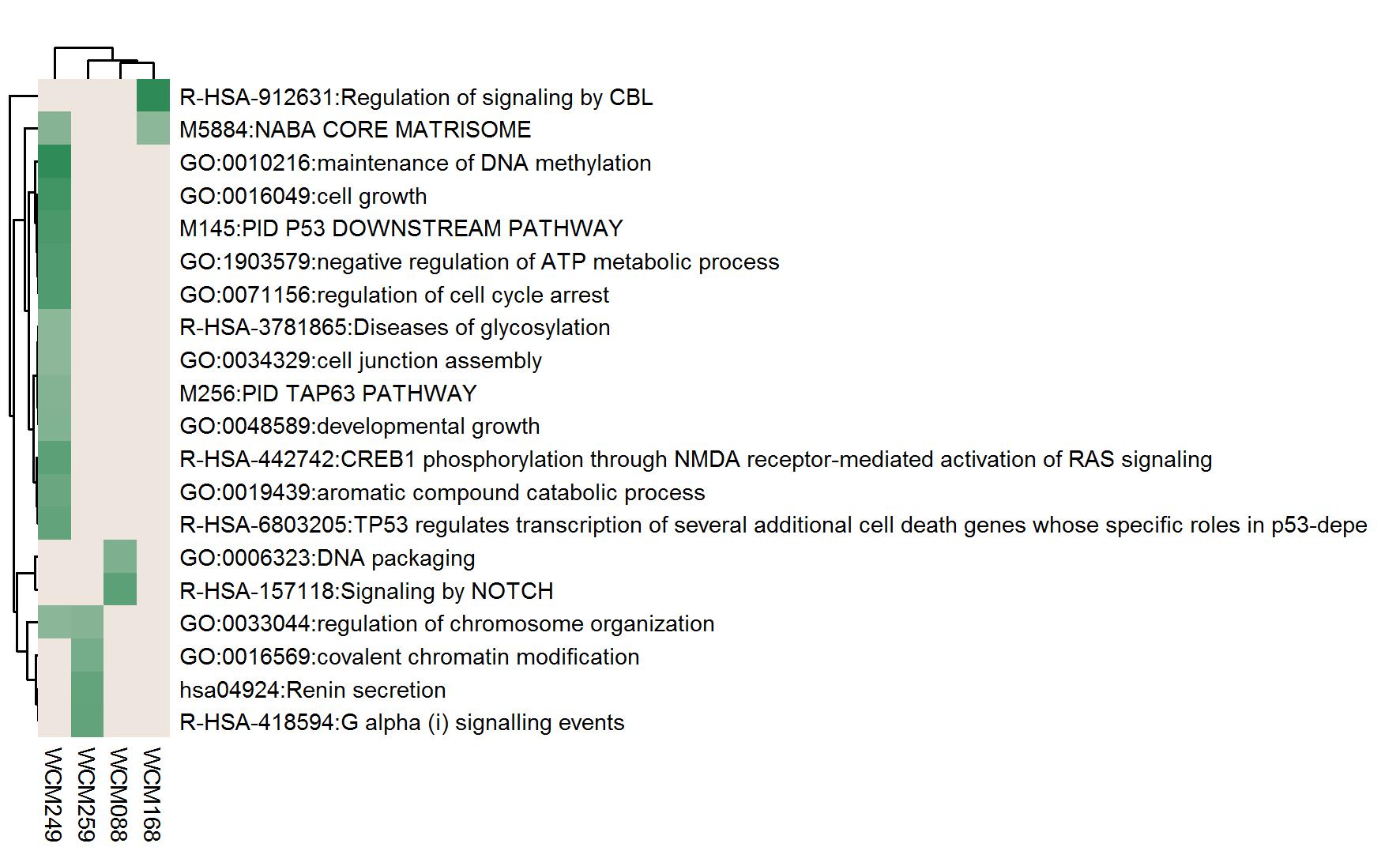
●Heatmap of the top enrichment clusters, generated by the trunk mutation gene list of each patient in the study.●Each row represents one cluster; each column represents one patient.●The discrete color scale represents statistical significance.
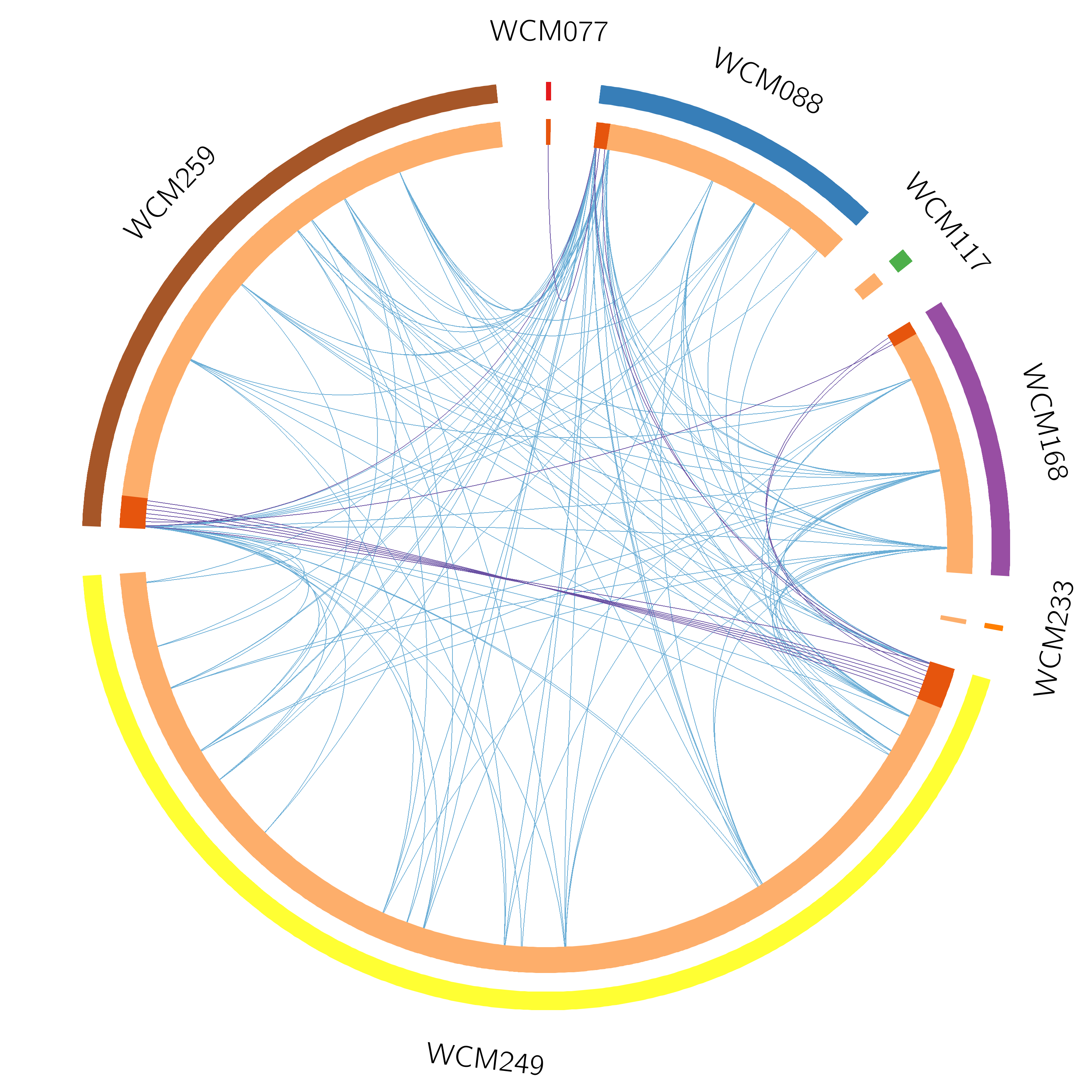
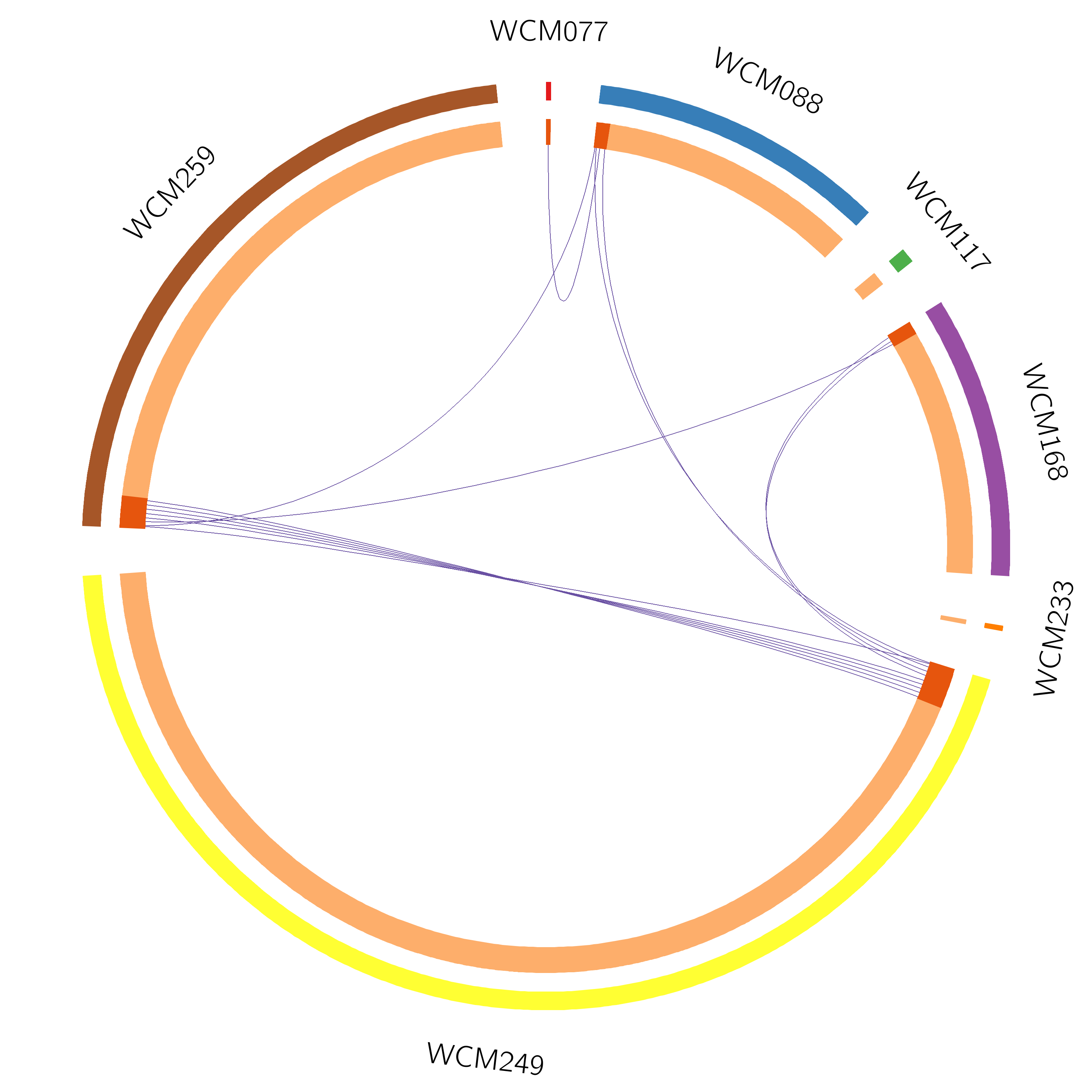
●The Circos plot shows the functional overlaps of genes that share the same ontology term.●The arc annotation is the same as in the left Circos plot.●Blue lines link the different genes where they fall into the same ontology term.
●The Circos plot shows the overlap of the trunk mutation gene list of each patient.●Each outside arc represents the identity of a gene list; each gene is represented as a spot on the inside arc.●For the inside arc, dark orange represents the genes that appear in multiple lists; light orange represents the genes that are unique to that gene list.●Purple lines link the same gene that shared by multiple gene lists.
●Enrichment network visualization for results from the multiple trunk mutation gene lists in one study.●Each term is represented by a circle node, where its size is proportional to the number of input genes fall into that term, and the color represents its cluster identity.●The edge links terms with high similarity; the thickness of the edge represents the degree of similarity. ●Click the picture, more details of the network by cluster can be illustrated.
●The same enrichment network as the above network figure, and has its nodes displayed as pies.●Each pie sector is proportional to the number of hits originated from a gene list.●The color code represents the identities of trunk mutation gene lists.●Click the picture, more details of the network by counts can be illustrated.

